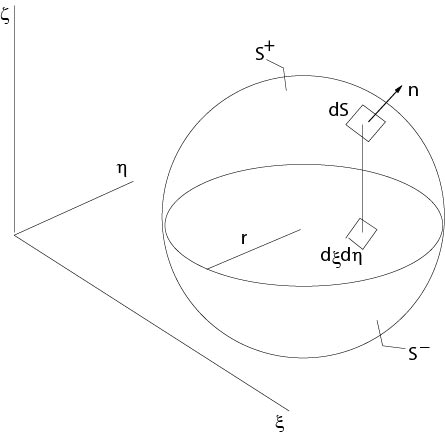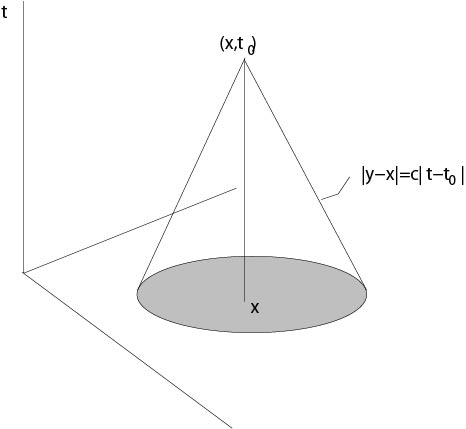4.2.2: Case n=2
- Page ID
- 2178
\( \newcommand{\vecs}[1]{\overset { \scriptstyle \rightharpoonup} {\mathbf{#1}} } \)
\( \newcommand{\vecd}[1]{\overset{-\!-\!\rightharpoonup}{\vphantom{a}\smash {#1}}} \)
\( \newcommand{\dsum}{\displaystyle\sum\limits} \)
\( \newcommand{\dint}{\displaystyle\int\limits} \)
\( \newcommand{\dlim}{\displaystyle\lim\limits} \)
\( \newcommand{\id}{\mathrm{id}}\) \( \newcommand{\Span}{\mathrm{span}}\)
( \newcommand{\kernel}{\mathrm{null}\,}\) \( \newcommand{\range}{\mathrm{range}\,}\)
\( \newcommand{\RealPart}{\mathrm{Re}}\) \( \newcommand{\ImaginaryPart}{\mathrm{Im}}\)
\( \newcommand{\Argument}{\mathrm{Arg}}\) \( \newcommand{\norm}[1]{\| #1 \|}\)
\( \newcommand{\inner}[2]{\langle #1, #2 \rangle}\)
\( \newcommand{\Span}{\mathrm{span}}\)
\( \newcommand{\id}{\mathrm{id}}\)
\( \newcommand{\Span}{\mathrm{span}}\)
\( \newcommand{\kernel}{\mathrm{null}\,}\)
\( \newcommand{\range}{\mathrm{range}\,}\)
\( \newcommand{\RealPart}{\mathrm{Re}}\)
\( \newcommand{\ImaginaryPart}{\mathrm{Im}}\)
\( \newcommand{\Argument}{\mathrm{Arg}}\)
\( \newcommand{\norm}[1]{\| #1 \|}\)
\( \newcommand{\inner}[2]{\langle #1, #2 \rangle}\)
\( \newcommand{\Span}{\mathrm{span}}\) \( \newcommand{\AA}{\unicode[.8,0]{x212B}}\)
\( \newcommand{\vectorA}[1]{\vec{#1}} % arrow\)
\( \newcommand{\vectorAt}[1]{\vec{\text{#1}}} % arrow\)
\( \newcommand{\vectorB}[1]{\overset { \scriptstyle \rightharpoonup} {\mathbf{#1}} } \)
\( \newcommand{\vectorC}[1]{\textbf{#1}} \)
\( \newcommand{\vectorD}[1]{\overrightarrow{#1}} \)
\( \newcommand{\vectorDt}[1]{\overrightarrow{\text{#1}}} \)
\( \newcommand{\vectE}[1]{\overset{-\!-\!\rightharpoonup}{\vphantom{a}\smash{\mathbf {#1}}}} \)
\( \newcommand{\vecs}[1]{\overset { \scriptstyle \rightharpoonup} {\mathbf{#1}} } \)
\( \newcommand{\vecd}[1]{\overset{-\!-\!\rightharpoonup}{\vphantom{a}\smash {#1}}} \)
\(\newcommand{\avec}{\mathbf a}\) \(\newcommand{\bvec}{\mathbf b}\) \(\newcommand{\cvec}{\mathbf c}\) \(\newcommand{\dvec}{\mathbf d}\) \(\newcommand{\dtil}{\widetilde{\mathbf d}}\) \(\newcommand{\evec}{\mathbf e}\) \(\newcommand{\fvec}{\mathbf f}\) \(\newcommand{\nvec}{\mathbf n}\) \(\newcommand{\pvec}{\mathbf p}\) \(\newcommand{\qvec}{\mathbf q}\) \(\newcommand{\svec}{\mathbf s}\) \(\newcommand{\tvec}{\mathbf t}\) \(\newcommand{\uvec}{\mathbf u}\) \(\newcommand{\vvec}{\mathbf v}\) \(\newcommand{\wvec}{\mathbf w}\) \(\newcommand{\xvec}{\mathbf x}\) \(\newcommand{\yvec}{\mathbf y}\) \(\newcommand{\zvec}{\mathbf z}\) \(\newcommand{\rvec}{\mathbf r}\) \(\newcommand{\mvec}{\mathbf m}\) \(\newcommand{\zerovec}{\mathbf 0}\) \(\newcommand{\onevec}{\mathbf 1}\) \(\newcommand{\real}{\mathbb R}\) \(\newcommand{\twovec}[2]{\left[\begin{array}{r}#1 \\ #2 \end{array}\right]}\) \(\newcommand{\ctwovec}[2]{\left[\begin{array}{c}#1 \\ #2 \end{array}\right]}\) \(\newcommand{\threevec}[3]{\left[\begin{array}{r}#1 \\ #2 \\ #3 \end{array}\right]}\) \(\newcommand{\cthreevec}[3]{\left[\begin{array}{c}#1 \\ #2 \\ #3 \end{array}\right]}\) \(\newcommand{\fourvec}[4]{\left[\begin{array}{r}#1 \\ #2 \\ #3 \\ #4 \end{array}\right]}\) \(\newcommand{\cfourvec}[4]{\left[\begin{array}{c}#1 \\ #2 \\ #3 \\ #4 \end{array}\right]}\) \(\newcommand{\fivevec}[5]{\left[\begin{array}{r}#1 \\ #2 \\ #3 \\ #4 \\ #5 \\ \end{array}\right]}\) \(\newcommand{\cfivevec}[5]{\left[\begin{array}{c}#1 \\ #2 \\ #3 \\ #4 \\ #5 \\ \end{array}\right]}\) \(\newcommand{\mattwo}[4]{\left[\begin{array}{rr}#1 \amp #2 \\ #3 \amp #4 \\ \end{array}\right]}\) \(\newcommand{\laspan}[1]{\text{Span}\{#1\}}\) \(\newcommand{\bcal}{\cal B}\) \(\newcommand{\ccal}{\cal C}\) \(\newcommand{\scal}{\cal S}\) \(\newcommand{\wcal}{\cal W}\) \(\newcommand{\ecal}{\cal E}\) \(\newcommand{\coords}[2]{\left\{#1\right\}_{#2}}\) \(\newcommand{\gray}[1]{\color{gray}{#1}}\) \(\newcommand{\lgray}[1]{\color{lightgray}{#1}}\) \(\newcommand{\rank}{\operatorname{rank}}\) \(\newcommand{\row}{\text{Row}}\) \(\newcommand{\col}{\text{Col}}\) \(\renewcommand{\row}{\text{Row}}\) \(\newcommand{\nul}{\text{Nul}}\) \(\newcommand{\var}{\text{Var}}\) \(\newcommand{\corr}{\text{corr}}\) \(\newcommand{\len}[1]{\left|#1\right|}\) \(\newcommand{\bbar}{\overline{\bvec}}\) \(\newcommand{\bhat}{\widehat{\bvec}}\) \(\newcommand{\bperp}{\bvec^\perp}\) \(\newcommand{\xhat}{\widehat{\xvec}}\) \(\newcommand{\vhat}{\widehat{\vvec}}\) \(\newcommand{\uhat}{\widehat{\uvec}}\) \(\newcommand{\what}{\widehat{\wvec}}\) \(\newcommand{\Sighat}{\widehat{\Sigma}}\) \(\newcommand{\lt}{<}\) \(\newcommand{\gt}{>}\) \(\newcommand{\amp}{&}\) \(\definecolor{fillinmathshade}{gray}{0.9}\)Consider the initial value problem
\begin{eqnarray}
\label{n2dgl}\tag{4.2.2.1}
v_{xx}+v_{yy}&=&c^{-2}v_{tt}\\
\label{initial1} \tag{4.2.2.2}
v(x,y,0)&=&f(x,y)\\
\label{initial2} \tag{4.2.2.3}
v_t(x,y,0)&=&g(x,y),
\end{eqnarray}
where \(f\in C^3,\ g\in C^2\).
Using the formula for the solution of the three-dimensional initial value problem we will derive a formula for the two-dimensional case. The following consideration is called Hadamard's method of decent.
Let \(v(x,y,t)\) be a solution of (\ref{n2dgl})-(\ref{initial2}), then
$$u(x,y,z,t):=v(x,y,t)\]
is a solution of the three-dimensional initial value problem with initial data \(f(x,y)\), \(g(x,y)\), independent of \(z\), since \(u\) satisfies (\ref{n2dgl})-(\ref{initial2}). Hence, since \(u(x,y,z,t)=u(x,y,0,t)+u_z(x,y,\delta z,t)z\), \(0<\delta<1\), and \(u_z=0\), we have
$$v(x,y,t)=u(x,y,0,t).\]
Poisson's formula in the three-dimensional case implies
\begin{eqnarray}
v(x,y,t)&=&\frac{1}{4\pi c^2}\frac{\partial}{\partial t}\left(\frac{1}{t}\int_{\partial B_{ct}(x,y,0)}\ f(\xi,\eta)\ dS\right)\nonumber\\
\label{poissonhilf1} \tag{4.2.2.4}
&&+\frac{1}{4\pi c^2 t} \int_{\partial B_{ct}(x,y,0)}\ g(\xi,\eta)\ dS.
\end{eqnarray}

Figure 4.2.2.1: Domains of integration
The integrands are independent on \(\zeta\). The surface \(S\) is defined by \(\chi(\xi,\eta,\zeta):=(\xi-x)^2+(\eta-y)^2+\zeta^2-c^2 t^2=0\). Then the exterior normal \(n\) at \(S\) is \(n=\nabla\chi/|\nabla\chi|\) and the surface element is given by \(dS=(1/|n_3|)d\xi d\eta\), where the third coordinate of \(n\) is
$$n_3=\pm\frac{\sqrt{c^2 t^2-(\xi-x)^2-(\eta-y)^2}}{ct}.\]
The positive sign applies on \(S^+\), where \(\zeta>0\) and the sign is negative on \(S^-\) where \(\zeta<0\), see Figure 4.2.2.1. We have \(S=S^+\cup\overline{S^-}\).
Set \(\rho=\sqrt{(\xi-x)^2+(\eta-y)^2}\). Then it follows from (\ref{poissonhilf1})
Theorem 4.3. The solution of the Cauchy initial value problem (\ref{n2dgl})-(\ref{initial2}) is given by
\begin{eqnarray*}
v(x,y,t)&=&\frac{1}{2\pi c}\frac{\partial}{\partial t}\int_{B_{ct}(x,y)}\ \frac{f(\xi,\eta)}{\sqrt{c^2 t^2-\rho^2}}\ d\xi d\eta\\
&&+\frac{1}{2\pi c}\int_{B_{ct}(x,y)}\ \frac{g(\xi,\eta)}{\sqrt{c^2 t^2-\rho^2}}\ d\xi d\eta. \end{eqnarray*}

Figure 4.2.2.2: Interval of dependence, case \(n=2\)
Corollary. In contrast to the three dimensional case, the domain of dependence is here the disk \(B_{ct_o}(x_0,y_0)\) and not the boundary only. Therefore, see formula of Theorem 4.3, if \(f,\ g\) have supports in a compact domain \(D\subset\mathbb{R}^2\), then these functions have influence on the value \(v(x,y,t)\) for all time \(t>T\), \(T\) sufficiently large.
Contributors and Attributions
Integrated by Justin Marshall.


